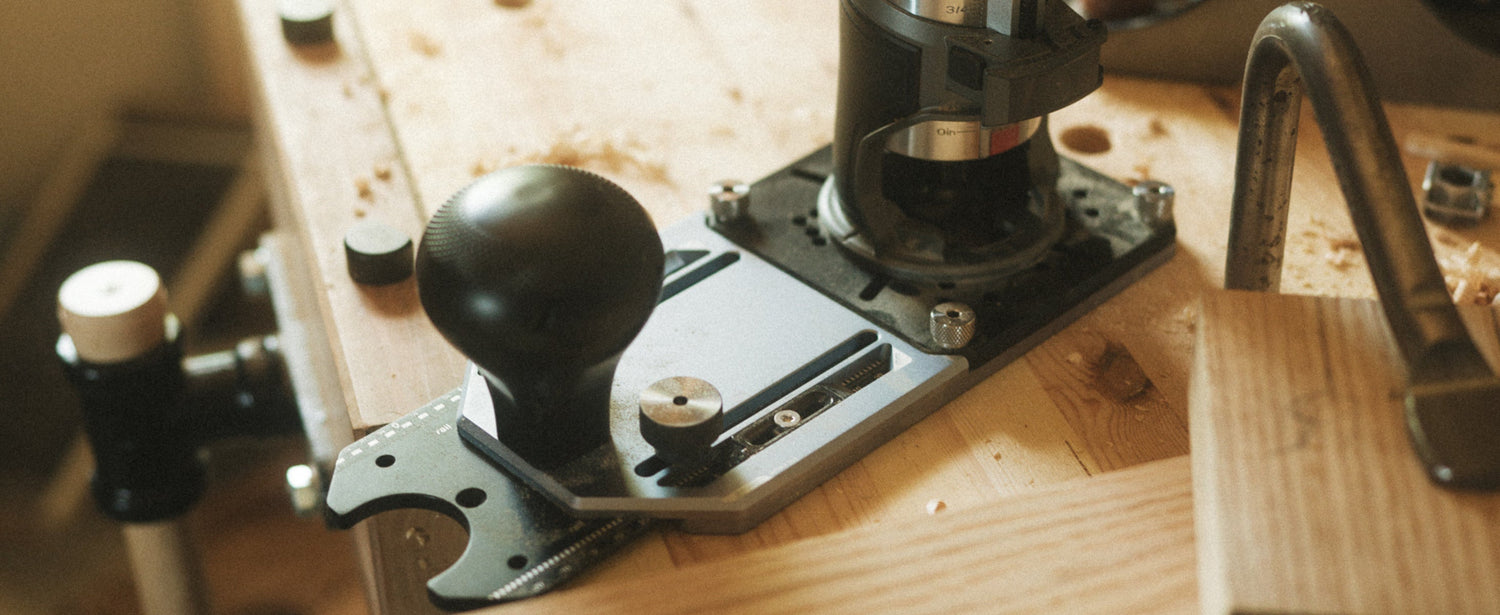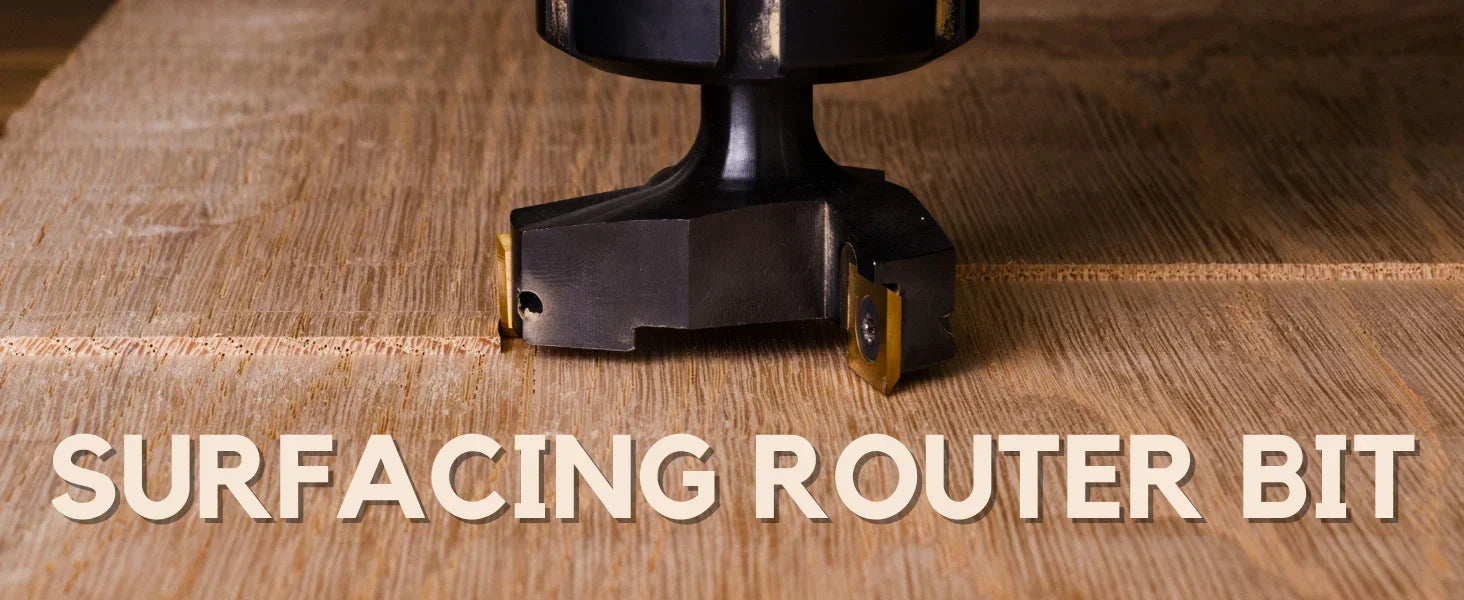CNC Router Bits: The Unsung Heroes of Precision Woodworking
Whether you’re a seasoned woodworker or just getting started, having the right router bit is like having the perfect paintbrush for an artist. In this guide, we’ll explore the must-have CNC router bits that every woodworker should have on hand to achieve clean, professional results in a variety of materials.
What Are CNC Router Bits?
CNC router bits are specialized cutting tools designed to shape, carve, and trim materials with incredible accuracy. These bits come in a range of shapes and sizes, each suited for specific tasks, such as engraving, profiling, cutting, and finishing. From hardwood to soft plastics, each router bit offers unique capabilities for creating intricate designs and clean cuts. CNC bits allow machines to follow pre-programmed paths, transforming digital designs into real-world creations.
Factors to Consider When Choosing Router Bits
When selecting router bits, there are several factors to keep in mind to ensure you get the best results:
- Material Compatibility: Make sure the bit is compatible with the material you are working on. Some bits perform better with specific materials, such as wood, plastic, acrylic or metal.
- Size & Diameter: Bit diameter affects both cut depth and speed. Larger bits remove more material, while smaller bits provide more precision for detail work.
- Coatings & Materials: Bits special coatings are more durable, especially for hard materials, as they resist wear and tear. There are many types of coating, it's important to check which one suits you better
- Bit Length & Flute Design: The length of the bit and flute style (up-cut, down-cut) affect chip removal, surface quality, and cut precision.
Top Must-Have CNC Router Bits for Every Woodworker
Now, let’s dive into the top CNC router bits every woodworker should have for diverse and precise results across different projects.
1. O-Flute Upcut Bits

O-flute upcut bits are designed with a single, spiral-shaped flute that directs chips away from the cutting area, moving them upward. Its single flute feature makes it ideal for soft materials like plastics, acrylics, and certain woods where effective chip evacuation is crucial to prevent melting or clogging.
The design of O-flute upcut bits ensures that materials don’t stick to the bit or pile up in the cutting path, which is common with soft materials. This results in a cleaner, smoother cut that reduces the risk of material warping or overheating.
These bits are perfect for applications like sign-making, engraving, or creating intricate shapes in plastics. The upcut motion also provides a sharp, clean edge along the bottom of the cut, ensuring a precise and polished finish. For any project involving plastics or soft materials, an O-flute upcut bit is a must-have.
2. V-Groove Bits

V-groove bits are essential for creating clean, angled cuts, making them a popular choice for decorative work. These bits are often used in applications like sign-making, engraving, and adding detailed carvings to woodworking projects. Their “V” shape makes them perfect for engraving lettering, lines, and decorative grooves. Most used v-bits are 30, 45 and 60 degree bits.
Depending on the angle of the bit, V-groove bits can create either shallow or deep cuts, offering versatility for a range of design needs. For example, sharper angles are great for fine details and shallow lines, while wider angles work well for deeper grooves or bolder design elements.
The precision of V-groove bits ensures a professional look with sharp, crisp edges, adding a refined touch to any project. Their versatility in creating clear and accurate engravings makes them an essential addition for woodworkers who want to add intricate design details to their work.
3. Compression End Mills

Compression end mills are specifically designed for cutting layered materials like plywood and MDF, which are prone to chipping and splintering. The 3/8-inch shank size is sturdy and provides stability, enabling the bit to handle tough cuts and ensuring precise results.
These bits have a unique combination of up-cut and down-cut flutes, known as a compression flute. This design keeps both the top and bottom edges of the material clean, preventing chipping or splintering on either side. For woodworkers who regularly work with laminated materials, this bit offers a clean, professional finish without the need for additional sanding or edge work.
Compression end mills are commonly used in cabinetmaking, furniture building, and other applications involving laminated woods or veneers. Their ability to create smooth cuts on both sides of the material makes them a valuable tool for high-quality, durable woodworking projects.
4. Ball Nose Bits

Ball nose bits, characterized by their rounded tips, are essential for 3D carving and sculpting. The curved tip allows for smooth, rounded edges, making these bits ideal for creating contours and organic shapes in wood, plastic, and foam.
These bits excel in projects that require a sculpted look, such as relief carving, 3D modeling, and decorative detail work. Their rounded profile helps to avoid sharp edges, creating a softer, more natural appearance that brings out the beauty of the material.
Ball nose bits are versatile enough to handle detailed work and are perfect for following complex, flowing shapes that would be challenging to achieve with other bits. For any woodworking project involving curves, rounded edges, or detailed 3D elements, ball nose bits are an invaluable tool.
5. Surfacing Bit

Surfacing bits, also known as flattening or spoilboard bits, are designed to level a material’s surface, creating a flat, even workspace. Larger in diameter than most other bits, surfacing bits can cover more area with each pass, making them ideal for preparing slabs, MDF, and other large panels.
These bits are commonly used to prepare the workspace on CNC machines, ensuring a smooth surface for future cuts and engravings. For woodworking projects involving large slabs or uneven boards, surfacing bits are essential for achieving a consistent, flat starting point, especially surfacing bits with replaceable blades, saves you the extra cost from buying new ones.
Beyond leveling, surfacing bits also help remove imperfections, preparing the material for a smooth and precise finish. By ensuring a level surface, surfacing bits contribute to the overall quality and accuracy of the final project, making them an indispensable tool in any CNC router bit collection.
Conclusion
Investing in a variety of CNC router bits will make a noticeable difference in the quality and versatility of your woodworking projects. From polished edges to smooth contours, each type of bit is a valuable tool that ensures professional, high-quality results. With the right bit selection, you’ll be able to create intricate designs, flat surfaces, and durable finishes that bring your projects to life. Choose wisely, maintain your bits, and elevate your woodworking to new heights!
FAQs
-
What are the most versatile CNC router bits? Straight bits, flush trim bits, and V-groove bits are among the most versatile and can handle a variety of cuts and materials.
-
How long do CNC router bits last? The lifespan of CNC router bits depends on use, material, and care. Regular sharpening and proper storage can extend their life significantly.
-
Which CNC bits are best for beginners? Straight bits and V-groove bits are user-friendly and versatile, making them ideal for beginners looking to achieve clean cuts and detailed designs.
-
What’s the difference between up-cut and down-cut bits? Up-cut bits remove chips upwards, providing efficient material removal, while down-cut bits push chips downwards to reduce tear-out on the top surface.
-
Are coated bits worth it? Yes, coated bits can increase durability and reduce friction, making them a solid choice for harder materials or when bits are used frequently.













